Related Research Articles

Walsingham is a civil parish in North Norfolk, England, famous for its religious shrines in honour of Mary, mother of Jesus. It also contains the ruins of two medieval monastic houses. Walsingham is 27 miles (43 km) northwest of Norwich.
Sopwell Priory was a Benedictine nunnery founded around 1140 on the site of an ancient hermitage in Sopwell, Hertfordshire, England. After the Dissolution, the priory was torn down and a Tudor manor house constructed in its place.

Our Lady of Walsingham is a title of Mary, mother of Jesus venerated by Catholics, Western Rite Orthodox Christians, and some Anglicans associated with the Marian apparitions to Richeldis de Faverches, a pious English noblewoman, in 1061 in the village of Walsingham in Norfolk, England. Lady Richeldis had a structure built named "The Holy House" in Walsingham which later became a shrine and place of pilgrimage.

Beeleigh Abbey near Maldon in Essex, England, was a monastery constructed in 1180 for the Order of Canons Regular of Prémontré, as known as the Norbertines or Premonstratensians. The order linked the change of the separate life of monks in the 12th century with the retrospective life of the friar, who was considerably more active.
Montfichet's Tower was a Norman fortress on Ludgate Hill in London, between where St Paul's Cathedral and City Thameslink railway station now stand. First documented in the 1130s, it was probably built in the late 11th century. The defences were strengthened during the revolt of 1173–1174 against Henry II.

Walsingham Priory was a monastery of Augustinian Canons regular in Walsingham, Norfolk, England seized by the crown at the Dissolution of the Monasteries under King Henry VIII.

The Holy Trinity Priory, also known as Christchurch Aldgate, was a priory of Austin canons founded around 1108 by the English queen Matilda of Scotland near Aldgate in London.

Hatfield Broad Oak Priory, or Hatfield Regis Priory, is a former Benedictine priory in Hatfield Broad Oak, Essex, England. Founded by 1139, it was dissolved in 1536 as part of Henry VIII's dissolution of the monasteries.
Hastings Priory was a medieval Augustinian monastic house in Hastings, East Sussex, England. It closed down in 1413.
Berden Priory was a priory in Essex, England. This site now has a Grade II* listed late 16th-century timber-framed house, the centre of Berden Priory Farm.
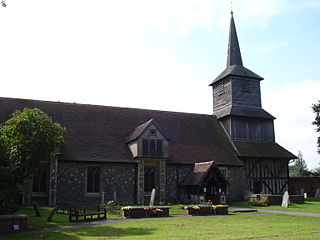
Blackmore Priory was a priory in Essex, England. It was established as an Augustinian Priory with a Prior and twelve Canons, who were not monks but ordained priests. They would be expected to work in the parish as well as lead a monastic life in the Priory.
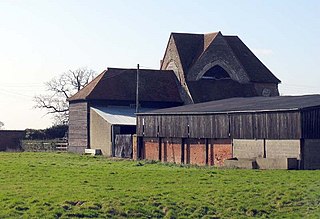
Latton Priory was a small priory in Essex, England. Its site is about 1 km south of the outskirts of the modern town of Harlow.

Little Dunmow Priory in Little Dunmow was an Augustinian priory in Essex, England. The priory was founded as a church by Juga de Baynard in 1104, dedicated to the Blessed Virgin Mary and consecrated by Maurice, bishop of London. Juga was the widow of Ralph Baynard, baron of Little Dunmow, sheriff of Essex and builder of Baynard's Castle in the City of London, since demolished. Her son Geoffrey was sheriff of Yorkshire who, in 1097, beat William II, Count of Eu in a trial by battle. After her death (c.1106), and following her wishes and the advice of Anselm, bishop of Canterbury, Geoffrey populated Juga’s church with Augustinian canons. In 1110, Lady Juga’s grandson, and Geoffrey’s son, William de Baynard, fell from grace and lost his lands. Henry I gave those lands to Robert Fitz Richard, but Henry and his wife Matilda of Scotland confirmed the canons’ possessions in Little Dunmow. Robert’s wife Maud, the step-daughter of Matilda’s brother David I, gave more lands to the canons, establishing the priory in perpetuity.
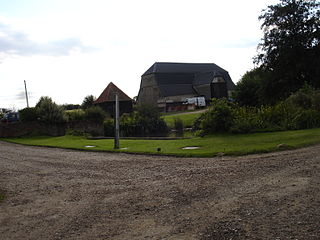
Panfield Priory was a priory of Augustinian Canons Regular sited in Panfield, Essex, England.
Takeley Priory, dedicated to Saint Valery, was a Benedictine monastery in Takeley, Essex, England, founded by William the Conqueror between 1066 and 1086, that is to say, after the Conquest and before Domesday Book. The priory, with substantial landholdings in Essex and Middlesex, was given to the Abbey of Saint-Valery in Normandy, as a thank-offering for their assistance in facilitating William's crossing of the Channel in 1066 to invade England.
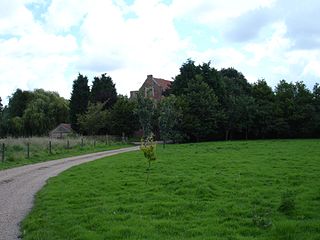
Tiptree Priory was a small Augustinian priory in Great Braxted, Essex, England and afterwards the name of the 16th century house built on the ruins.
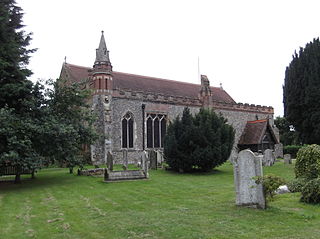
Hatfield Peverel Priory was a Benedictine priory in Essex, England, founded as a secular college before 1087 and converted into priory as a cell of St Albans by William Peverel ante 1100. It is in the English Heritage Register of Parks and Gardens of Special Historic Interest in England and is located on the south side of the village of Hatfield Peverel, about 5 miles north-east of Chelmsford. At the Dissolution of the Monasteries, a timber-frame structure dominated the property.

Newsham Abbey was an abbey in Newsham, a small hamlet north of Brocklesby village in Lincolnshire, England. Founded by Peter of Gousla in 1143, Newsham was a daughter house of the Abbey of Licques, near Calais, and the first Premonstratensian house established in England.

Healaugh Park Priory was an Augustinian priory in Healaugh, North Yorkshire, England, some 2 miles (3 km) north of Tadcaster.

Great Bricett Priory was a medieval monastic house in Great Bricett in Suffolk, England, the chapel of which is now in use as the Church of England parish church of St Mary and St Lawrence. Ralph FitzBrian and Emma his wife, about the year 1110, founded a priory for Austin canons at Bricett, which was dedicated to the honour of St Leonard. The foundation charter endowed the priory with the tithes of Bricett and of 'Losa' with its chapel, a moiety of the church of 'Stepla,' and the associated church of Stangate, Essex, in addition to various plots of land in the vicinity. The founder also gave to the canons a large garden on the south of the monastery and a smaller one on the east, and he ordained that whenever he was in Suffolk the canons were to act as his chaplains and to receive a tithe of his bread and beer. The priory of Bricett was claimed, early in the thirteenth century, as pertaining to the monastery of Nobiliac, in the diocese of Limoges and the Duchy of Berry. This claim was resisted, but in 1295 an agreement was arrived at favourable to the foreign house, whereby Bricett became an alien priory; this composition was renewed and confirmed by the Bishop of Norwich in the chapter house of Bricett, on 16 July 1310. In a long list of royal protections to religious houses in 1295, in return for bestowing on the king a tithe of their income, the priory of Bricett is described as a cell to the priory of 'Noblac in Lymoche's'.